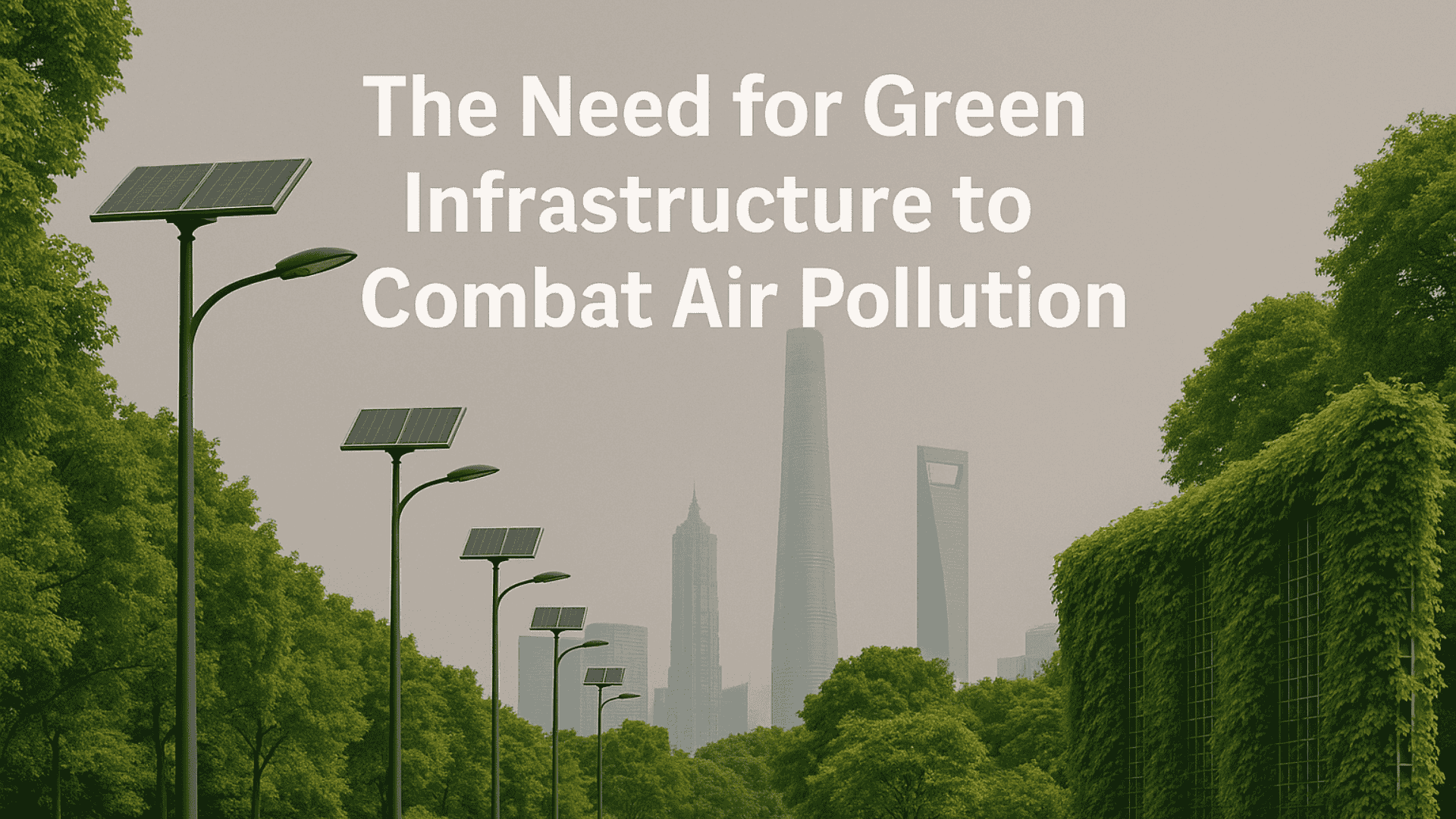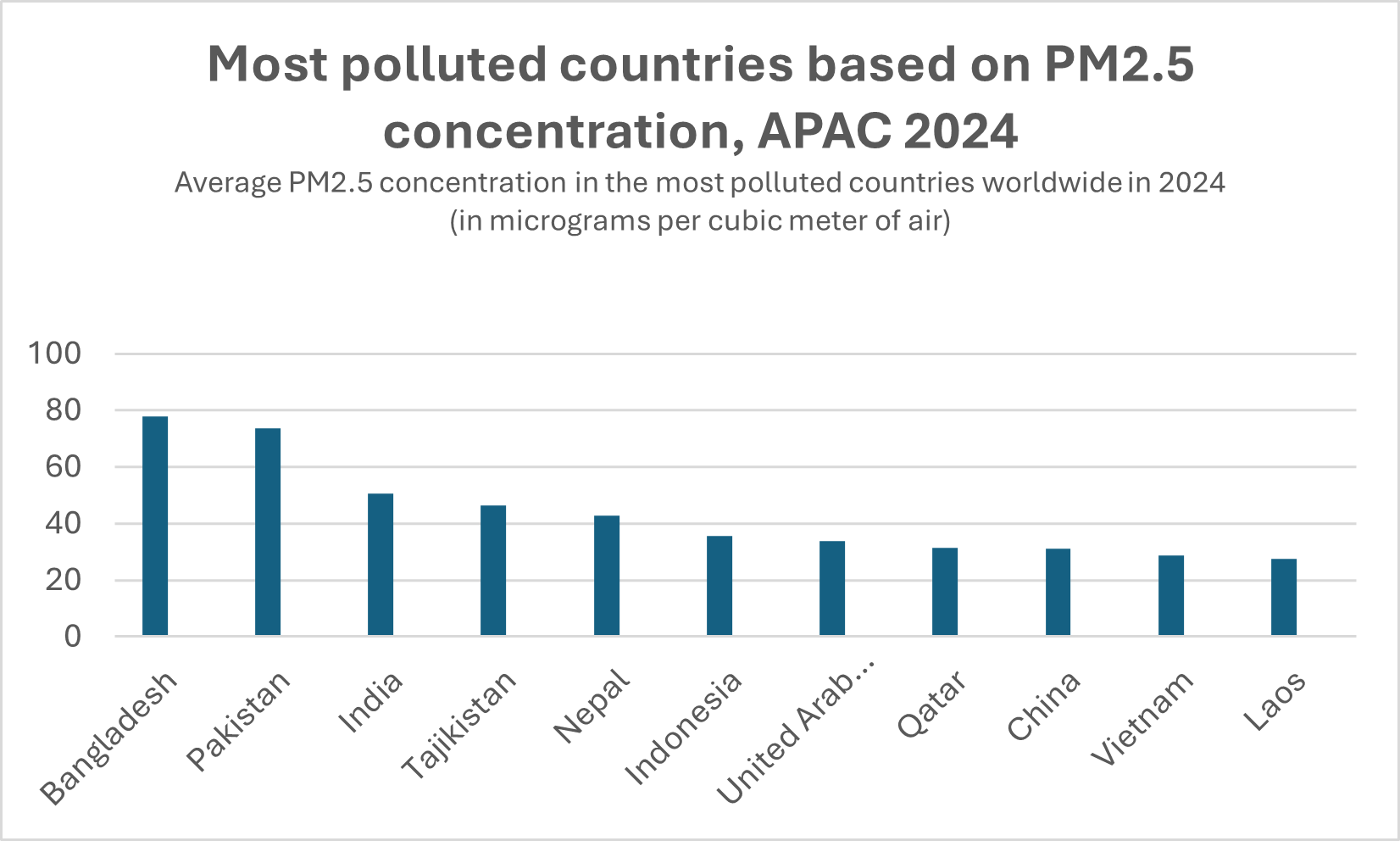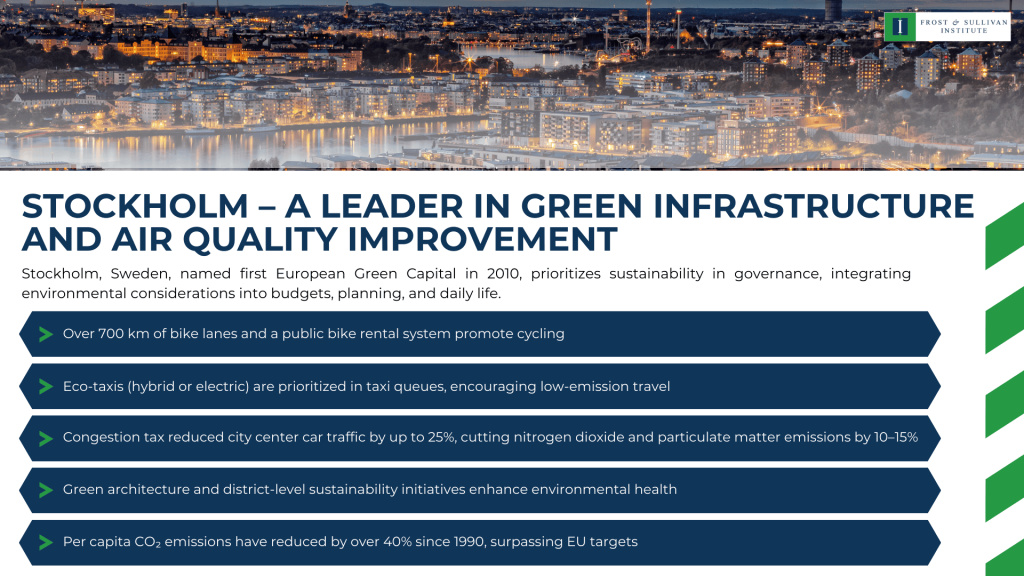
29 Apr The Need for Green Infrastructure to Combat Air Pollution
With the global population expected to reach nearly 10 billion by 2050, urban areas are projected to continue growing, thereby putting increased pressure on existing infrastructure and exacerbating environmental challenges. A recent report from UNEP highlights that infrastructure is responsible for 79 percent of all greenhouse gas emissions and calls on governments to treat infrastructure as a priority sector for climate action. The concept of “green infrastructure” has emerged as an essential solution to some of the most pressing environmental challenges facing cities and communities worldwide.
The deteriorating quality of air has become a critical issue in urban areas worldwide, with cities struggling to cope with rising levels of air pollution that pose significant health risks to their populations. According to the World Health Organization (WHO), air pollution is now considered the world’s largest environmental health risk, responsible for approximately 7 million premature deaths annually. Air pollution, primarily driven by vehicular emissions, industrial activities, and the burning of fossil fuels, has led to the accumulation of harmful pollutants that have far-reaching consequences, contributing to respiratory diseases, cardiovascular problems, and even premature deaths. The urgency to address this issue is reflected in the increasing global recognition of the need for cleaner air, especially in highly polluted urban areas.

One increasingly promoted method for air pollution mitigation is the use of green infrastructure (GI): street and park trees, green walls, green roofs (Berardi et al. 2013).
What is Green Infrastructure and Why Does it Matter?
Green infrastructure refers to a network of natural and semi-natural systems, such as trees, wetlands, parks, green roofs, and permeable surfaces, that work together to provide ecological, social, and economic benefits. Unlike traditional infrastructure, which relies on hard engineering solutions like concrete roads and stormwater systems, green infrastructure uses natural processes to manage water, improve air quality, reduce urban heat islands, and enhance biodiversity. Green infrastructure includes various components, from urban forests to rain gardens. These elements mimic the natural environment, helping to create more resilient cities while providing spaces that improve the quality of life for residents.
As urban populations swell, air pollution has become one of the most significant environmental and public health challenges, with an estimated 91% of the global population living in areas where air quality levels exceed World Health Organization (WHO) guidelines. Green spaces help lower urban temperatures, which in turn reduces the formation of ground-level ozone, a key component of smog. By integrating green infrastructure, cities can reduce airborne pollutants, potentially preventing tens of thousands of premature deaths related to air pollution each year. Moreover, urban green spaces not only mitigate the impacts of pollution but also increase the overall livability of cities, offering residents cleaner air, reduced heat, and a higher quality of life.

Green infrastructure is not just a luxury, it is a necessity for creating sustainable, livable cities. By integrating natural systems into urban design, we can reduce our carbon footprint, manage stormwater, improve public health, and support biodiversity. Green infrastructure is essential for a more resilient and sustainable future. As we face the challenges of climate change, urbanization, and public health, now is the time to invest in green infrastructure and build cities that thrive alongside nature.
Blog by Shreya Ghimire,
Research Analyst, Frost & Sullivan Institute
